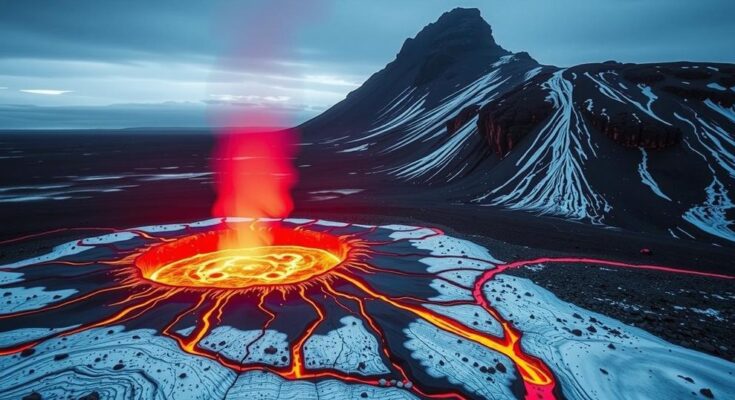A magnitude 3.8 earthquake hit Bárðarbunga recently, indicating increased volcanic activity after months of seismic disturbances. Experts note that although there is a pattern of increased earthquakes, there is no immediate cause for alarm at this time. Monitoring continues as the region shows signs of magma movement below the surface.
Recent seismic activity has significantly increased at the Bárðarbunga volcano, with a magnitude 3.8 earthquake recorded at approximately 4:30 PM yesterday. This uptick follows a pattern observed in recent months, suggesting that the volcano may be on the brink of an eruption. Since the notable eruptive event at Holuhraun in 2015, the area has seen an escalation in volcanic activity, with inflation and frequent earthquakes indicating magmatic movement beneath the surface.
While the increased frequency of seismic events should not be overlooked, according to natural disaster expert Böðvar Sveinsson, there has not yet been a sufficient level of activity to necessitate an emergency response. He remarked, “There is always a certain warning when something like this happens, but this is not the case in which we set everything in motion,” referring to the growing concern due to the prevalence of large earthquakes in the vicinity.
This year alone, the Bárðarbunga region has experienced four earthquakes registering magnitude 5 or above, marking a notable rise in volcanic activity for the area. The Icelandic Meteorological Office has detected inflation around the caldera, further confirming the pressures accumulating beneath Bárðarbunga, indicative of a possible eruption in the near future. The last earthquake exceeding magnitude 3 occurred on December 19, adding to the list of seismic disturbances this year.
Bárðarbunga is one of Iceland’s most active volcanoes, situated beneath the Vatnajökull glacier. It gained significant attention during its last major eruption in 2015, which had substantial geological implications as well as effects on air travel across Europe. Continuous monitoring by the Icelandic Meteorological Office allows for the assessment of seismic activity, inflation, and potential magma movement, contributing to the wider understanding of volcanic behaviors and associated hazards.
In conclusion, the recent earthquake activity at Bárðarbunga underscores a potential resurgence of volcanic activity, reminiscent of the significant eruptions in 2015. While experts caution against immediate alarm, ongoing monitoring of the volcano is critical as the region continues to experience heightened seismic activity and inflation, suggesting that the situation requires close observation and readiness for any developments.
Original Source: icelandmonitor.mbl.is




